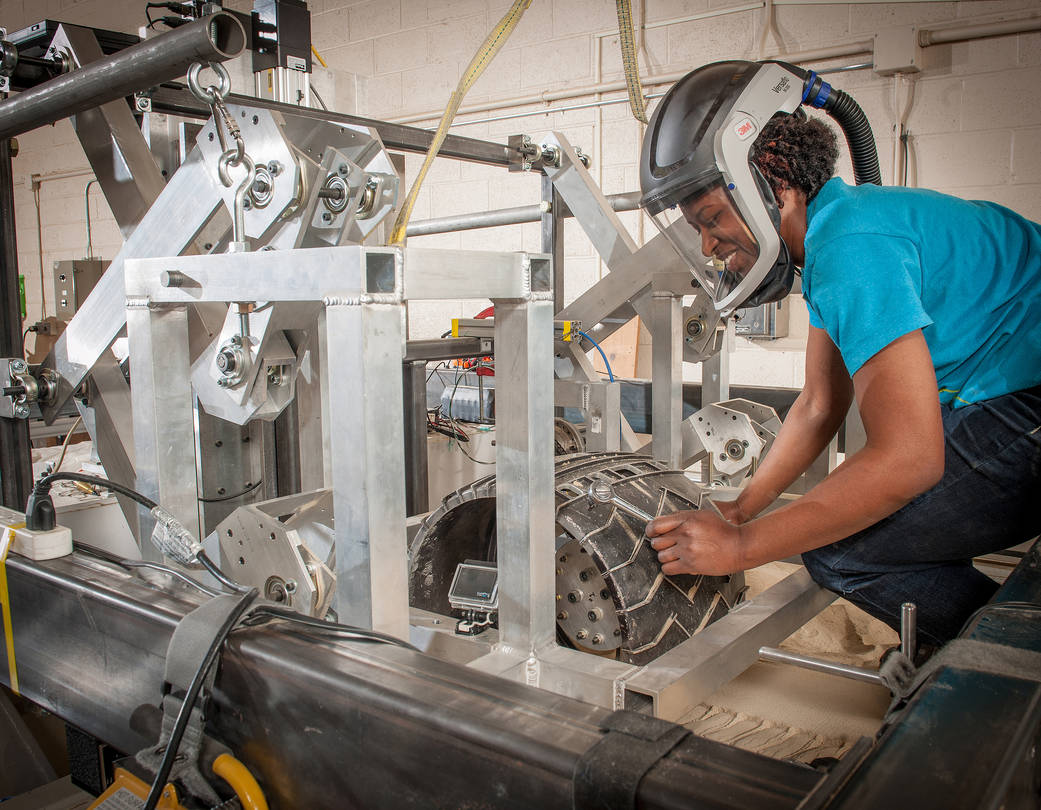In support of the Mars Science Laboratory Program (MSL), a set of the same wheels currently on the Mars Curiosity Rover were sent to NASA Glenn recently for performance evaluation by the Jet Propulsion Laboratory (JPL) in California. The goal is to understand the effects of wheel damage on traction performance.
NASA Glenn technician Ariana Miller checks the wheel mount and drive hardware assembly on a Curiosity wheel for tests at the Traction and Excavation Capabilities Lab. Researchers are using a newly built single-wheel tester to simulate a variety of terrain conditions similar to Mars including loose granular soil, dense high shear strength soil and a bedrock-like material.
The pace of holes appearing in Curiosity’s aluminum wheels increased unexpectedly in late last year, compared with the first 12 months of the rover’s mission on Mars. Curiosity was crossing terrain studded with sharp, embedded rocks. By early 2014, changes in route planning and driving methods slowed the pace of wheel damage. The tests at NASA Glenn are part of the rover project’s efforts to understand how the damage occurs, to develop methods for further reducing the pace of damage and to anticipate how accumulation of damage to the wheels could affect performance.
Image Credit: NASA
Michelle M. Murphy (Wyle Information Systems, LLC)





























